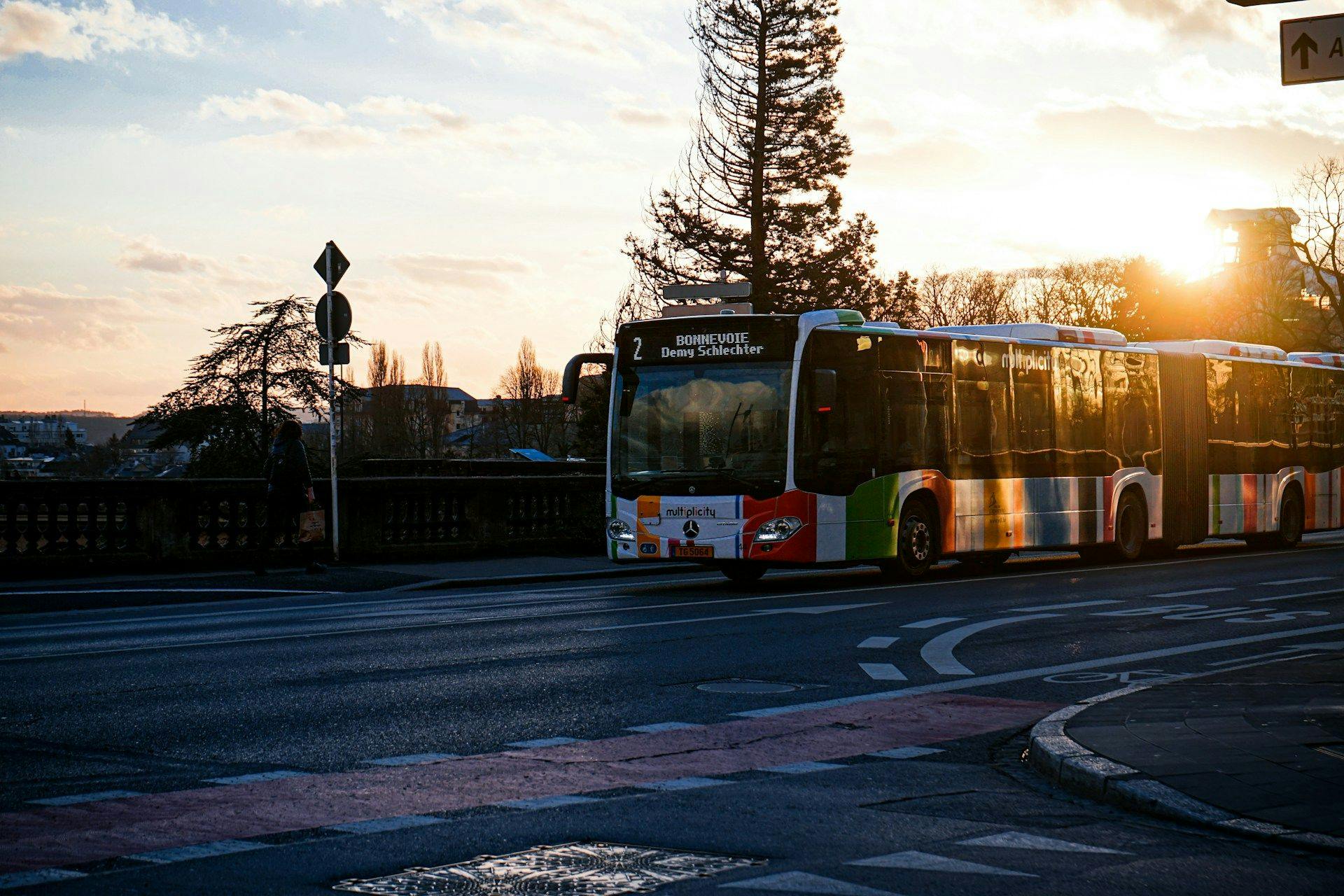
Public transportation in Luxembourg
One of the most important characteristics of any great country is the mobility of its citizens. The development of the road infrastructure, the accessibility of public and private transport, and the overall quality of the transport system are all aspects that Luxembourg exceeds in. The public transport network is operated by the Administration des transports publics (ATP).
One of the most important characteristics of any great country is the mobility of its citizens. The development of the road infrastructure, the accessibility of public and private transport, and the overall quality of the transport system are all aspects that Luxembourg exceeds in. The public transport network is operated by the Administration des transports publics (ATP).
The essentials you should know about Luxembourg's transport
Transport in Luxembourg is a unique phenomenon, so there is quite a lot to talk about. Here are the key aspects worth exploring before travelling to the Grand Duchy.
Public transport is not only reliable, but also completely free, so it makes it a popular choice to travel around the country
Severe traffic load in the country and high living standard are just some of the motives behind this absolutely unique decision from Luxembourgish legal authorities. Though a journey by public transport rarely amounts to a significant expense, it is these little changes that, in the end, make up a big difference and improve the overall quality of individuals’ life. Therefore, the convenience factor behind public transport is indisputable.
Though this may not have been one of the goals for making this decision, one cannot deny the electric fuelled nature of Luxembourg public transport is also environmentally friendly. Meaning, the motivation for choosing public transport goes beyond convenience or comfort: it represents a responsible and reliable action anyone can take.
Interested in sustainability? Read more in the article: Luxembourg's environment protection plan costs will rise.
Luxembourg is rather small — it provides just 30,189 kilometres of roads and highways for commuting. However, it is important to keep in mind all those regularly travelling to the Grand Duchy from the neighbouring countries: the ever-increasing number of cross-border workers has reached 200,000 people, equaling one third of the country's overall population. Therefore, all this transport results in massive traffic jams and frustration. Thus, taking public transport can oftentimes be equally, or even more, comfortable than the private kind.
Naturally, keeping in mind all aforementioned assets and benefits, the government has already launched a social campaign to encourage people to take public transport more often. Some of the residential municipalities and cities across the country have , in which the drivers can leave their vehicles and use the tram, bus, or train to move around the city.
Luxembourg Airports
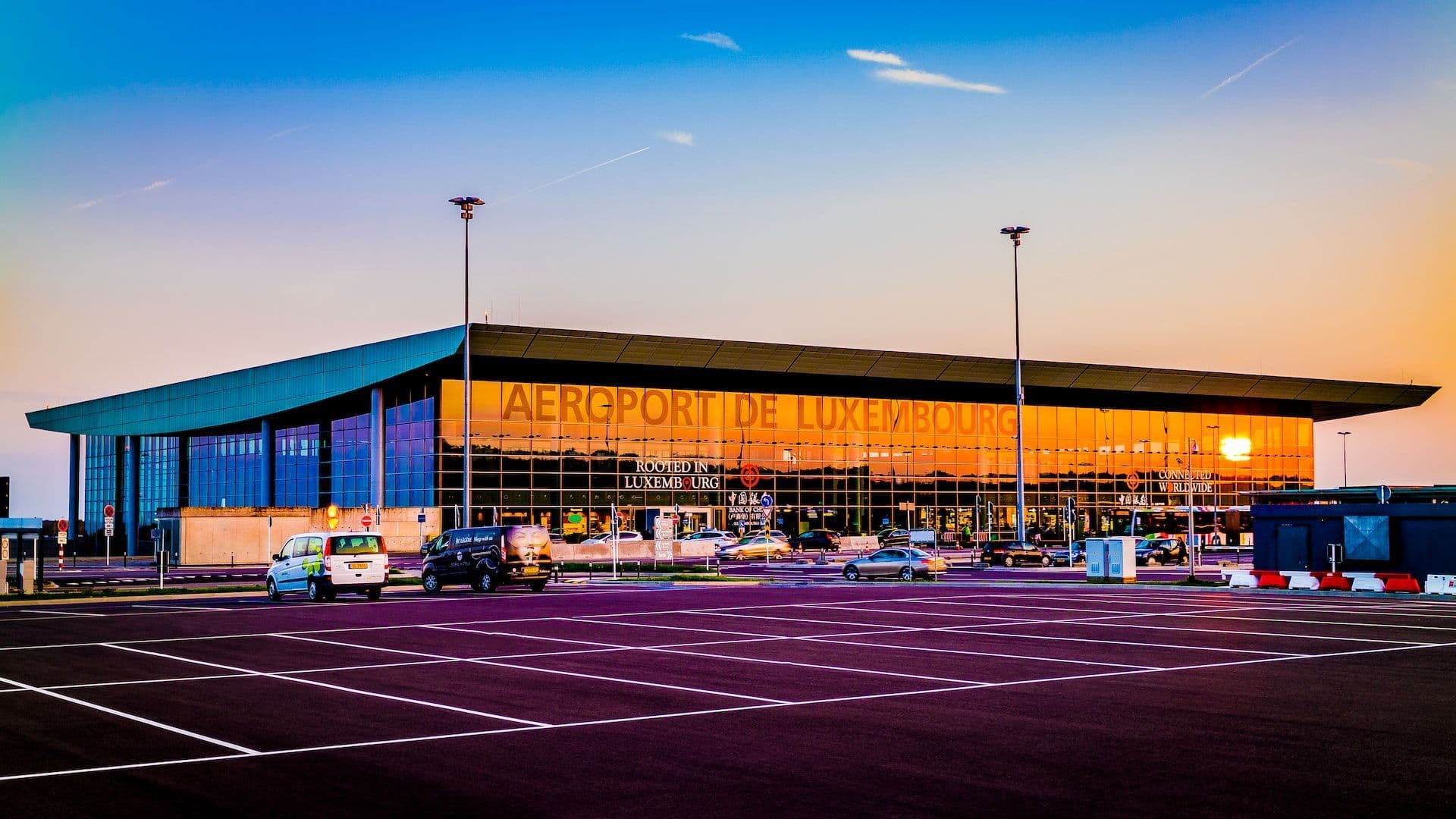
If you look up from the city center at any point of the day, your chances to spot a plane in the sky are fairly high. Most likely, you will get to the Grand Duchy for the first time by plane. Air travel in the country is operated by the Directorate of Civil Aviation (DAC).
The main international airport in Luxembourg is Findel. It is also the only airport you will find in the country. It has 2 terminals and is considered rather small, though it suffices the size of Luxembourg.
It is located five kilometers away from the capital and is mostly used for flights to the major cities of Europe.
Two biggest state airline offices are based at Findel Airport: Luxair, the country's largest civilian carrier, and Cargolux, dealing exclusively with cargo transportation. Other operating airlines include both traditional airlines and low-coster airlines that fly all over the world: Aegean, ITA Airways, British Airways, Easy Jet, Hahn Air, KLM Royal Dutch Airlines, LOT Polish Airlines, Lufthansa, Ryanair, Swiss, Turkish Airlines, TAP Air Portugal, VOLOTEA and W!zz Air.
Closeness of the airport to the city makes it very available to everyone. Read more on this topic in the article "Getting to the Findel Airport".
Luxembourg Trains
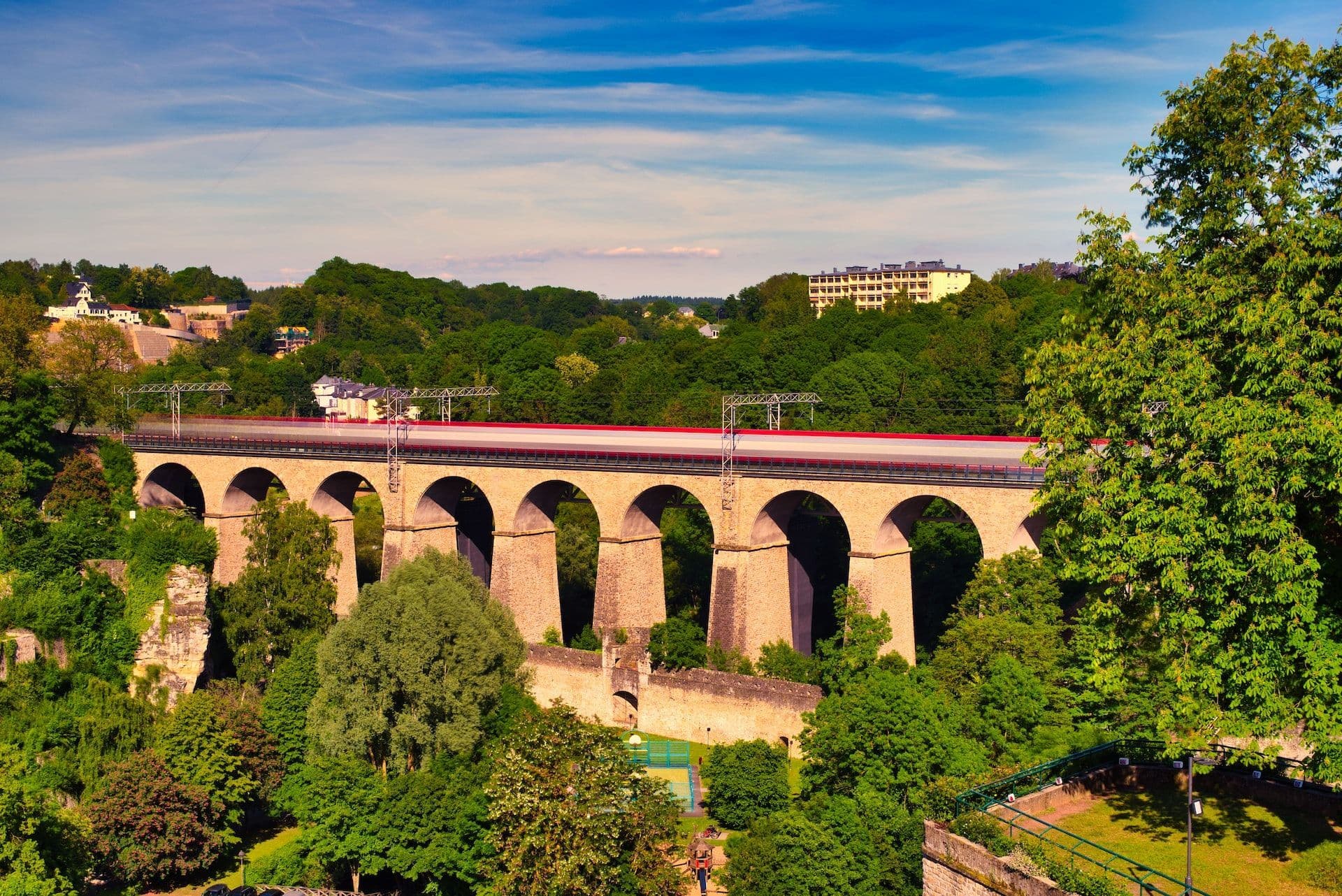
One of the ways to move around the country is by train. Railroad travel is operated by CFL, the Luxembourg National Railway Company (Société Nationale des Chemins de Fer Luxembourgeois).Trains make it easy to get around the country, as well as serve in case you need a cross-border trip to Belgium, France or Germany. The short-length train trips are a popular way to spend weekends: by visiting museums, tourist attractions, or shopping outlets in and out of the country.
Trains make it easy to get around the country, as well as represent a great opportunity when in need of cross-border travel to Belgium, France or Germany. Local, short-length trips to neighbouring countries enable a simple visit to nearby museums, tourist attractions or shopping outlets.
The price factor of train travel in Luxembourg is not its only advantage - trains are also incredibly dependable and accurate, scoring at a high 92,1% in punctuality. This could be one of the reasons why the number of passengers has significantly risen in the last 20 years, amounting to about 85% more commuters.
If case you need help or assistance, on-duty service staff on stations (Luxembourg, Ettelbruck, Wasserbillig, Esch/Alzette, Belval-Université, Pétange and Rodange) can help you on your trip. When using other train stations, you will need to get in touch with CFL assistance services before your trip:
- For local traveling — at least 1 hour before the departure;
- For international traveling — at least 48 hours before the trip.
If you choose to drive to the train station by car, a parking lot is available at every stop. Free parking lots next to the train stations are called Park and Ride zones, they are available in Luxembourg City and in communes.
Though railroad travel is free of charge on the territory of Grand Duchy, some rides are still covered with a fee, for example:
- First-class seats for passengers over 12 years old;
- Cross-border trains to Belgium, France, and Germany.
Though Luxembourg is multicultural, all announcements made while traveling by train are exclusively in French, one of the official languages of the country.
Though Luxembourg is populated by multicultural characters speaking various different languages, all announcements made while travelling by a train are exclusively in French.
Short-distance trains
For convenience, passengers of railroad transport are usually advised to download the CFL Mobile app. It gives real-time information on bus and train schedules, possible routes, perturbations, and fares conditions. You can also buy tickets there.
Fixed timetables for certain national routes can also be found on CFL’s official website. Additionally, you can prepare for your journey by searching for specific departure and/or arrival destinations, as well as the timing, number of changes or minimum/maximum distance of your liking for the trip.
Long-distance trains
Choosing a train as international means of transport in Luxembourg can be both affordable and practical.
Long-distance trips should be planned in advance: the availability and price of the tickets depend on the time left before the journey for some trips and destinations.
Furthermore, to save money when traveling in Europe, you can opt for second-class rather than first-class, as the prices for first-class tickets tend to be generally higher.
Train service allows residents and non-residents in the Grand Duchy to travel to bordering countries for the lowest rates possible — each day the trains depart from Luxembourg City Gare (located at Place de la Gare L-1616 Luxembourg) to France, Germany, and Belgium. You can see the international train timetable and buy tickets on the TGV website.
| Destination | Price (2nd class ticket, adult) | Time |
| Thionville (France) | 3,90 euros | 30 minutes |
| Strasbourg (France) | 19,50 euros | 2,5 hours |
| Paris (France) | 66 euros | 2,5 hours |
| Arlon (Belgium) | 4,60 euros | 20 minutes |
| Brussels (Belgium) | 33,10 euros | 3,5 hours |
| Antwerp (Belgium) | 43,50 euros | 4,5 hours |
| Trier (Germany) | 5,40 euros | 1 hours |
| Frankfurt (Germany) | 65 euros | 4,5 hours |
| Stuttgart (Germany) | 95 euros | 4 hours |
The luxury of free public transport of Luxembourg ends at the country's borders. This means that cross-border passes and tickets are necessary for international journeys. There are inspectors groups on international trains. All violators receive hefty fines, which can reach several thousand euros.
You can access the international train timetable using this link: cfl.lu.
Buying a train ticket in Luxembourg
It is necessary to have your ticket with you when traveling across the border from Luxembourg. You can buy tickets using mobile apps, or the ticket service — all the stations have both classic ticket offices and ticket booths.
Some tickets may be more expensive when purchased from a ticket booth at the station.
Various mobile apps are available in Luxembourg and in destination countries. For example, in France, there is a domestic mobile app called SNCF Connect. In Luxembourg, you can use the CFL mobile app for your trips in Luxembourg and inthe Greater Region. Use the CFL International app for your trips to Belgium, France, Netherlands, Germany, Switzerland, Austria, Denmark, and other destinations
When buying the ticket via the application, download it and make sure to keep it at hand for controllers on the train: they will scan the QR code on your phone. Some trains are equipped with charging plugs for your smartphone, but you can also print the purchased ticket at the train station — just use the SNCF or CFL booths.
The ticket booths are located at every station. They operate in Luxembourgish, French, German, and English languages, which can be convenient for expats. Keep in mind that once you purchased the tickets, they are valid only for certain trips and trains, non-refundable and non-exchangeable.
In Luxembourg, payments can be made using credit and debit cards (Vpay, Visa, Mastercard, Maestro) as well as with cash and coins. Larger denominations of banknotes, such as 5, 10, 20 or 50 euros, can be used in the terminals at these stations:
- Luxembourg (all machines);
- Bettembourg (close to the main building);
- Clervaux;
- Differdange (shelter track 1);
- Esch-sur-Alzette (underground passage);
- Ettelbruck (close to the main building);
- Mersch (close to the main building);
- Pétange (shelter track 2/3);
- Rodange (between the pedestrian bridge and the bus station);
- Wasserbillig (close to the main building).
In Luxembourg, payments can be made using Credit/Debit/Charge cards (Vpay, Visa, Mastercard, Maestro) as well as coins.
If you use cash, keep in mind, that the train ticket machines are not suitable for money exchange. Banknotes of 5, 10, 20 or 50 euros, can be used in the terminals at various stations in the Grand Duchy. While 100 euros banknotes will only be accepted if the trip cost is 40 euros or more.
Luxembourg Buses
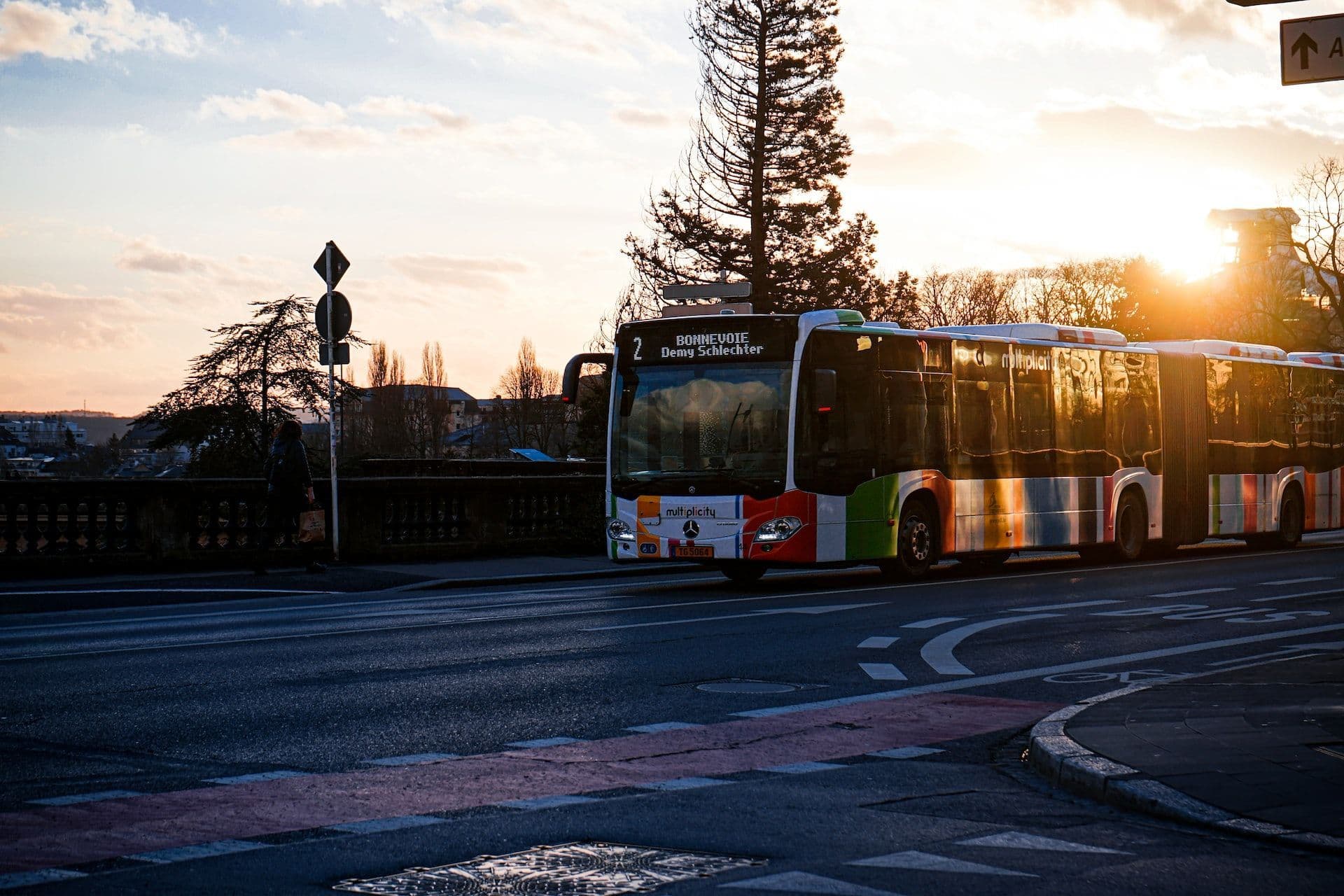
The buses are practically the national means of transportation in Luxembourg. They are considered the best way to travel not only between the cities but also between the communes and the city center. There are various routes, that work on different schedules.
There are currently 31 bus lines In Luxembourg City and their routes are well-developed.
Almost like regional trains, buses provide residents and commuters with cross-border routes.
Trams in Luxembourg
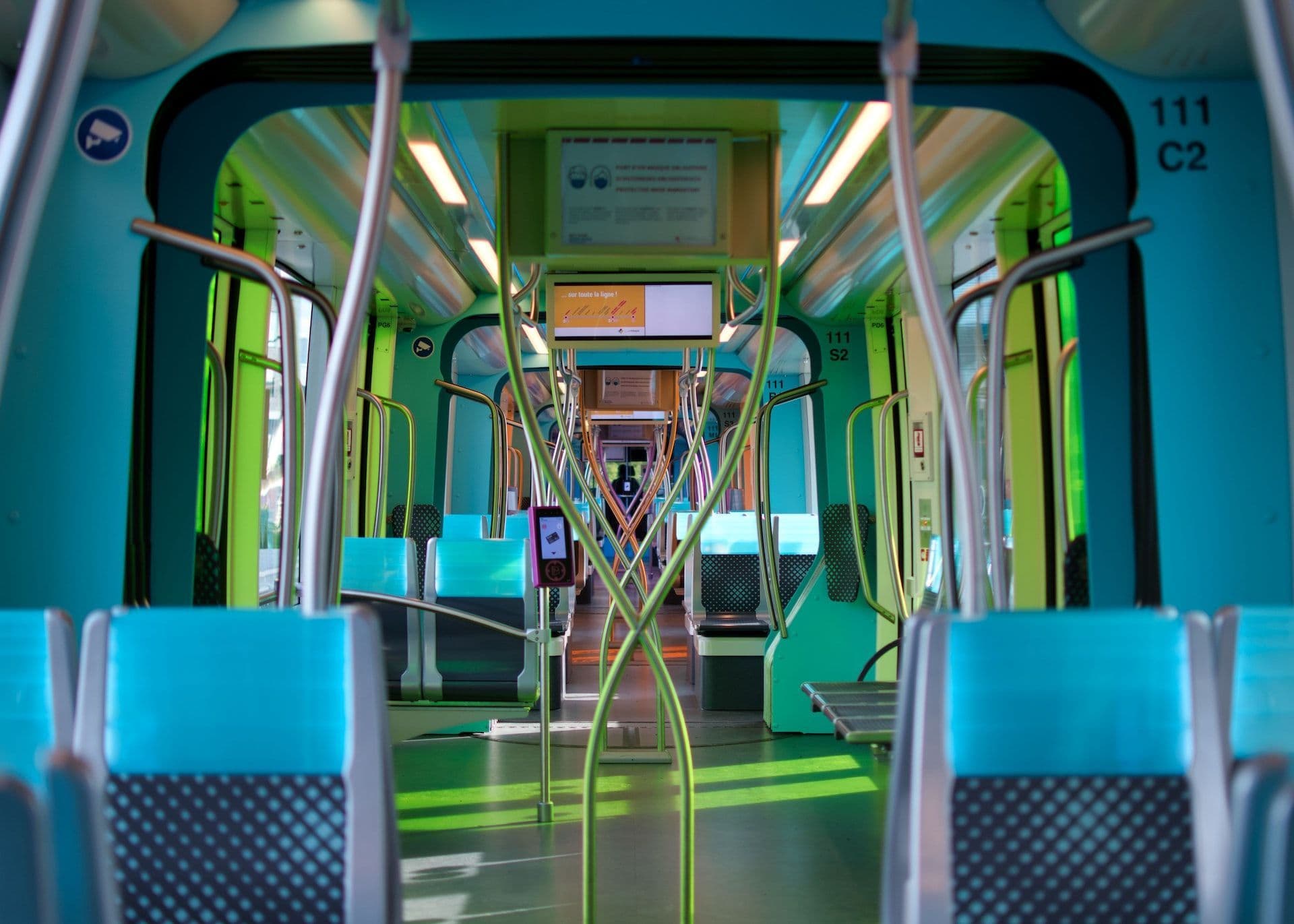
Another way to travel around the city with comfort and for free is by city trams.
The tram line has been running since late 2020, provided by Luxtram (curated by The Ministry of Sustainable Development and Infrastructure)
It is easy to notice the tram stops in the city: they are well equipped with glass constructions and benches and have digital information panels, which say how many minutes you will have to wait until the next tramway comes. All the announcements are made in Luxembourgish, but the tram stop names are also announced in French.
Fun fact — each tram line stop has its own distinctive jingle and announcement sound.
Special attention during the development process has been put on overlapping the bus stops with tram lines, making it easier to switch public transport in Luxembourg. The main public transportation hub is considered to be the Hamilius bus and tram stop in the center of the city.
The tram line connects KIRCHBERG Luxexpo and BONNEVOIE Lycée Bouneweg stops, located in separate parts of the city. In total, there are 17 stops of the Luxembourg tram line: Luxexpo; Alphonse Weicker; Nationalbibliothéik / Bibliothèque nationale; Universitéit; Coque; Europaparlement / Parlement européen; Philharmonie; Rout Bréck / Pafendall; Theater; Faïencerie; Stäreplaz / Place d'Étoile; Hamilius; Place de Metz; Place de Paris; Gare Routiere / Luxembourg Central Station; Leschte Steiwer / Dernier Sol; Lycée Bouneweg.
Since the tram travels on one pathway in just two directions, you don’t need to worry about when you will try to get on it and how to connect.
Trams run every 2-5 minutes throughout the week and slightly less often on the weekends and late at night: the waiting time is likely to be around 5 minutes, and no more than 15 minutes. The first tram departs at 4:22 a.m. and the line operates until the latest at 12:40 a.m. on some days of the week.
The full timetable can be found on the Mobilitet APP and Luxtram website.
Recently the state and Luxtram officials announced that they are planning to extend the existing line in Kirchberg and to the Hollerich district by adding 2 more stations towards Hollereich and 3 new stations towards Kirchberg.
If you have doubts about any information on traffic and disruptions considering tram lines, you can contact Luxtram support by email via
Luxembourg Bikes
If you want to opt for an option to conveniently and environmentally friendly travel through Luxembourg but also simultaneously getting your daily exercise in, the town also offers bike rentals! Still, the exercising factor of the bikes is minimal as they are electrically driven, so maybe you should just be craving a breath of fresh air.
Vel’OH
Vel’oh bikes are available 24/7 and its stations for picking up or dropping off the bike are scattered all over the city centre and surrounding areas, counting over 100 stations in total.
You can start your bike-riding journey by downloading a Vel’OH app and creating an account that will best fit your needs. The service offers long-term and short-term subscriptions that are fairly affordable.
Once you have done this, you will be able to get a detailed and clear map of where you can find the nearest stations, how many bikes are available at the time and what their battery percentage is. You can also find a
Taxi in Luxembourg
If you prefer your public transport to take you straight from point A to point B, taxis in Luxembourg are available and can be ordered through several different companies.
Unfortunately, it is rather expensive — taxi services in Luxembourg are one of the most expensive in Europe.
There are about 150 taxi companies in the country, and the forthcoming reforms are unlikely to make things any cheaper for ordinary people.
But if you need to catch a leaving train or get somewhere quickly, there is no better way than using a taxi. You can do it by simply raising your hand on the street, by calling a taxi service by phone or by booking it online using a profile.
But if you need to catch a leaving train or get somewhere quickly, there is no better way than using a taxi. You can do it by simply raising your hand on the street, by calling a taxi service by phone, or by booking it online in the app.
| Taxi service | Mobile app | Tariffs | Phone number | |
| WEBTAXI | Yes | 3,30 to 4,10 euros/km | +352 27 515 | info@webtaxi.lu |
| ALO TAXI | Yes | 3,20 euros/km; 6,60 euros basic fee 10% cross-border and night time fee; 25% Sunday rate | +352 28 37 18 73 | Info@alotaxi.lu |
| taxi.eu | Yes | Different tariffs available | +49 30 20 20 21 101 | info@taxi.eu |
| Hellotaxi | No | Different tariffs available | +352 27 36 56 56 | No |
| My Taxi Luxembourg | No | Different tariffs available | +352 621 693 014 | info@mytaxiluxembourg.lu |
| Moien taxi | No | Airport taxi: to Charlaroi Airport — 390 euros; to Frankfurt Hahn airport — 240 euros; to Bruxelles Zaventem airport — 450 euros. | +352 661 666 664 | No |
| TaXi MaXi Luxembourg | No | Different tariffs available | +352 661 289 940 | No |
| Taxi Pinto & Fils S.àr.l. Luxembourg | No | Different tariffs available | +352 661 450 031 | No |
In the year 2023, an updated version of the application WebTaxi mobile app was launched. Below, we will provide a detailed description of its features and improvements.
Uber in Luxembourg
Uber just recently launched in Luxembourg and is already gaining popularity among the population. Although local carriers actively opposed the company, the aggregator was able to successfully develop its service within the country.
Carsharing
Carsharing is becoming increasingly popular in Luxembourg, with several companies offering this service. The reason for that is that it is usually cheaper and more eco-friendly: it also helps a lot to ease the traffic in the Grand Duchy.
The cars are typically parked at designated locations throughout the city and can be booked online or via a mobile app.
Some of the most popular carsharing companies in Luxembourg include Carloh and Flex.
Carloh and Flex are two carsharing services in Luxembourg, backed by the CFL. They offer a diverse range of vehicles, including small, medium, and commercial options. With over 60 pick-up locations spread across Luxembourg, including major city centers and public transport hubs, accessing their fleet is convenient and hassle-free.
There are a few carpooling services in Luxembourg as well. This is Klaxit, Blablacar, etc.
Water Transport
Luxembourg has cargo and civilian fleets. There are 60 merchant ships in the country. At the same time, ships from other countries are used in the country as well.
The main water artery in the country is the Moselle river, located on the border between the Grand Duchy and Germany. It provides easy access to the sea and cooperation with other countries, as well as passenger boat journeys for people, who like to travel by water.
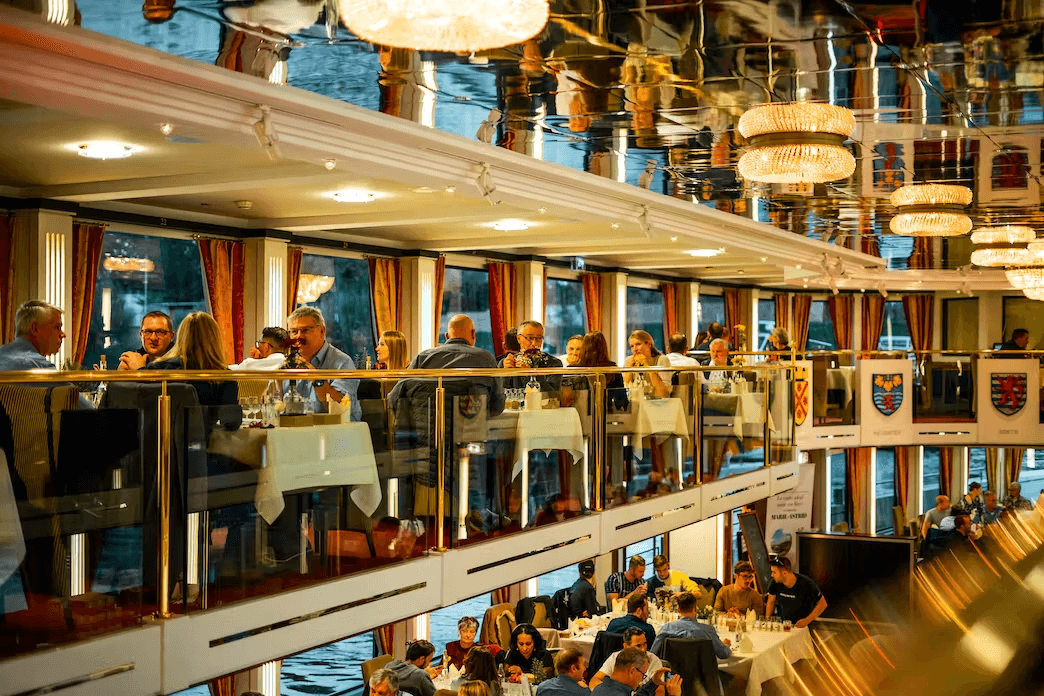
Traveling by boat is rather considered to be a leisure activity than real transportation means. There are few companies operating on the Moselle river.
For example, «Princesse Marie-Astrid» boat offers different cruises to observe the river and enjoy the ride. The price for the tickets is 20 euros for adults, 10 euros for kids under 12 years, and free of charge for those under 6 years old.
Tourist water travel is more developed on the Sûre and Moselle rivers in Luxembourg.
There are no such water resources or a fleet of vessels like in Norway, for example. But it can be a good occasional entertainment for residents and guests. Traveling around the country by land is still much easier.
Funicular

Besides buses, trams, and other public transport — Luxembourg has a spectacular cable car or funicular. Established in 2017 it provides fast access to other transport and cycle roads. Waiting time for this rather unusual and entertaining ascend is about 3 minutes, same with the tram. And likewise, it is completely free of charge. It connects the Pfaffenthal district and the Kirchberg Plateau.
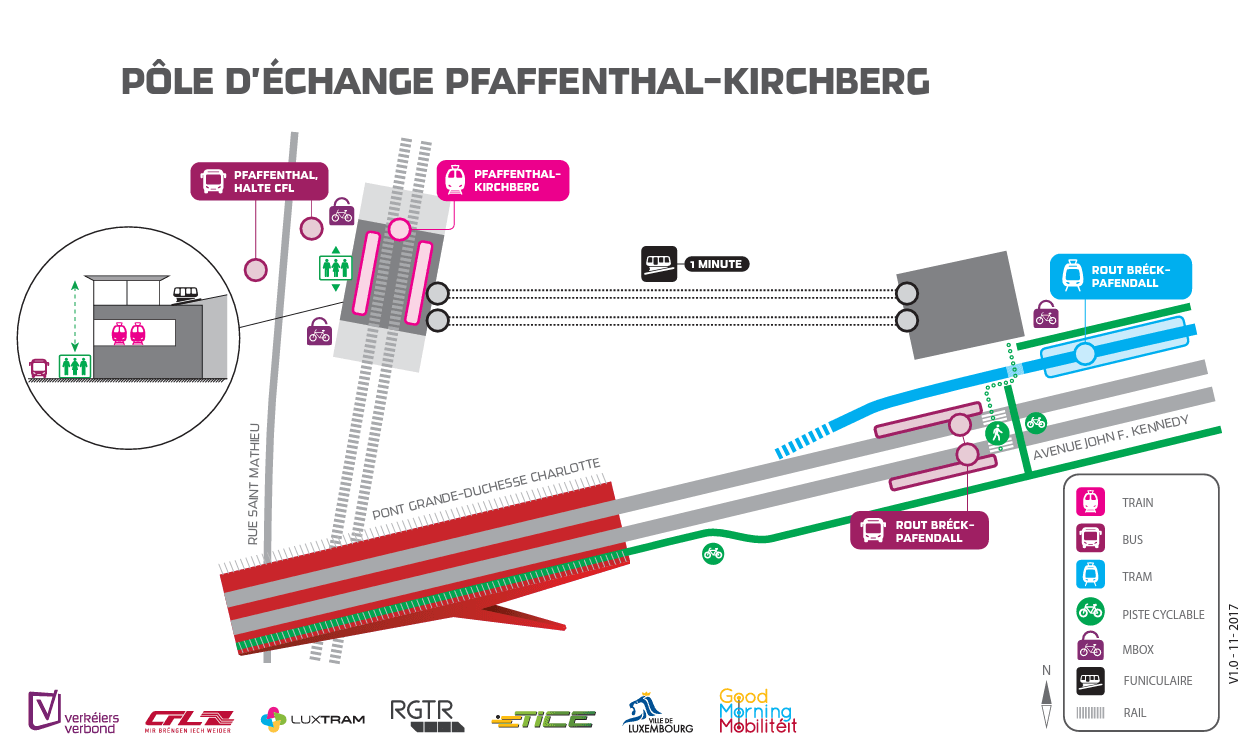
The cable car in Luxembourg offers great views: it is surrounded by a forest and during the trip you can observe the city from the top. You will see the bridge of the Grand Duchess Charlotte (also known as Pont Rouge) and the downtown district of Luxembourg City.
The ride only takes about a minute, but it rises (or descends) the passengers for 40 meters. The funicular is located on Avenue John F. Kennedy 1115, Luxembourg.
Public transport apps in Luxembourg
There is no easier way to navigate the public transport system in Luxembourg, than using dedicated mobile apps. Besides Google Maps, you can download some Luxembourg-approved and based mobile applications.
Most of the time they are created by government companies and departments. The variety can be used to navigate the city, check bus timetables and perturbations of railroad work of the public transport, buy tickets and plan trips. The majority of them are available in English and can be downloaded from official resources of your phone system — Google Play and App Store.
Besides that, you can always get access to a few useful transport-related websites in Luxembourg via your browser:
- Journey planner by Mobiliteit (website).
- Routes map by Ville de Luxembourg (website).
- Routes map by Ville de Luxembourg (website).
The main application for planning trips with public transport across the Grand Duchy. Plenty of features allow users to build detailed travel plans, switch types of transports, and create maps and favorite addresses. Here you will find
- News on transportation system work;
- Alerts on emergencies and shutdown routes;
- Maps of the routes of public transport;
- Real-time updates on traffic in the Greater Region;
- Available spots numbers in different parking lots;
- Cycling and walking paths.
Available for download in Google Play and App Store.
This is an app related to train travel in Luxembourg by the National Railway Company. The official application allows users to plan trips in real time, buy train tickets online in Luxembourg and get updates on railroad services. You can find inside such features as
- Real-time geolocation-based trip builder;
- Closest departures of trains;
- Alternative routes and transport means;
- Calendar synchronization for departure alerts;
- Buying and collecting train tickets.
Available for download in Google Play and App Store.
SNCF Mobile — is the best application for traveling to or from France. With constant perturbations on the railroad in the neighboring country, it will be useful for cross-border workers and tourists. As mentioned before, it is sometimes cheaper to buy tickets from Luxembourg to France via this app, than at the train station via a ticket booth. What you can find here:
- Best options to travel in, to or from France;
- Tickets for TGV InOui, Ouigo, TER;
- Tickets, abonnements, reduction cards;
- News and alarms on national strike days;
- Connecting transports, easiest routes, closes trains.
Available for download in Google Play and App Store.
This application is dedicated to Luxembourgeous airlines. You can plan the trip, find good offers for comfortable traveling by air, and even register for a flight with this app. Luxair also offers special city guides in the application, to make a journey unique for its passengers. Among other application features are:
- Mobile check-in and pass;
- Booking flights and buying tickets;
- Checking the status of arrivals and departures;
- Convenient baggage drop updates;
- Three languages build-in.
Available for download in Google Play and App Store.
If you are an active person, probably you drive a bike in Luxembourg. It is a very common means of transportation in the Grand Duchy: it is healthy, convenient, and very much loved by the residents. Vel'OH service provides bicycles for those, who want to rent one in the city. It's a state service, that makes micro-mobility more available. The app includes features like:
- Bike sharing subscriptions and plans for renting;
- Map of available bikes for a ride — 93 stations;
- 30 minutes of ride for free;
- Tips on safety and highway code;
- Best routes and real-time tracking of a current ride.
Available for download in Google Play and App Store.
A new release of the app happened in 2023, so the brand new version is available. This is the closest you can find to Uber (but the prices are still much higher): an online taxi aggregator, that helps you get a cap without calling the operator. Other useful features include:
- Real-time car and driver tracking;
- Different tariffs, including eco and limo for special occasions;
- Promo-codes and different reduction systems;
- Personal account with favorite addresses and places;
- Easy car ordering and online payment.
Available for download in Google Play and App Store.
Frequently Asked Questions (FAQ)
How much does a bus or train trip cost in Luxembourg
What does Luxembourgish public transport consist of
What are the most useful apps for passengers of public transport in Luxembourg
Source: autobus.lu, cfl.lu, luxair.lu, mobiliteit.lu, luxembourg-city.com, transports.public.lu, sncf-connect.com
We took photos from these sources: Photo by Claudy Decoux, Unsplash Photo by Gabor Koszegi, Unsplash Photo by Keo Oran, Unsplash Photo by Gabor Koszegi, Unsplash Photo by Entente touristique de la Moselle Luxembourgeoise Photo by luxembourg-city.com Photo from transports.public.lu Photo from Luxtoday